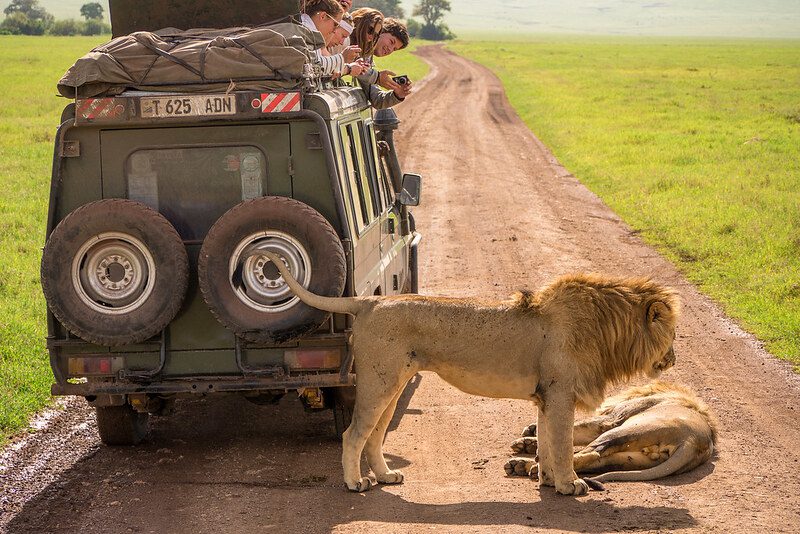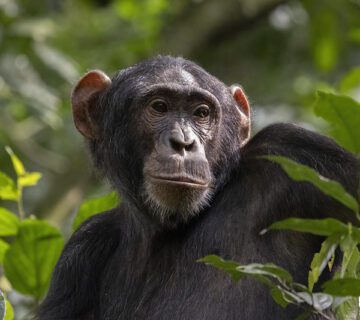Embarking on a safari to witness the grandeur of the Big Five is a dream for many wildlife enthusiasts. The term “Big Five” holds significant importance in the realm of African safaris, symbolizing iconic wildlife that has long mesmerized adventurers and nature lovers alike. From the majestic lion, formidable rhinoceros, and colossal elephant to the elusive leopard and mighty buffalo, encountering these magnificent creatures in their natural habitat is an experience that leaves an indelible mark on all those fortunate enough to witness it.
What is the significance of the Big Five on a safari?
The term “Big Five” holds historical significance originating from the colonial era when these five animals were considered the most dangerous to hunt on foot. The list comprises the lion, rhinoceros (both black and white), elephant, leopard, and buffalo. Today, the emphasis is on conserving these species, and spotting them in the wild has become a badge of honor for safari-goers.
Why are they called the Big Five?
The term “Big Five” was coined by big game hunters, reflecting the animals deemed most challenging and dangerous to hunt on foot. The moniker “big” does not necessarily refer to their size but rather to the perceived difficulty of hunting these magnificent creatures.
What makes spotting the Big Five so special?
Seeing the Big Five is a testament to the untamed beauty of the African wilderness and the diverse array of wildlife that inhabits it. It signifies the successful coexistence of these animals in their natural environment and allows for a deep connection with the continent’s iconic fauna.
Which countries are best for seeing the Big Five?
While the Big Five can be found in several African countries, some of the best destinations for spotting these iconic species include South Africa, Kenya, Tanzania, and Botswana. The diverse landscapes and rich biodiversity of these countries offer unparalleled opportunities to observe the Big Five in their natural habitats.
Where to go on a Big Five safari?
When planning a Big Five safari, it’s essential to consider the prime locations renowned for their populations of these iconic animals. Several national parks and game reserves across Africa offer exceptional opportunities for spotting the Big Five in the wild, each with its unique allure and natural splendor.
What are the top safari destinations for spotting the Big Five?
The Masai Mara in Kenya, the Serengeti in Tanzania, the Kruger National Park in South Africa, and the Chobe National Park in Botswana are among the most revered destinations for witnessing the Big Five in their natural habitat. These vast and untamed wilderness areas provide an immersive safari experience and ample opportunities for remarkable wildlife encounters.
What is the best time of year to go on a Big Five safari?
The dry season, typically from late June to October, is considered the best time for a Big Five safari. During this period, vegetation is sparse, and animals gather around water sources, making it easier to spot them. Additionally, the weather is more predictable, ensuring optimal conditions for an unforgettable safari adventure.
Are there specific national parks known for their Big Five populations?
The Sabi Sands Game Reserve in South Africa and the Ngorongoro Crater in Tanzania are renowned for their high concentration of the Big Five. These protected areas offer an unparalleled opportunity to witness these majestic creatures in their natural habitats and are considered must-visit destinations for safari enthusiasts.
How to best spot each of the Big Five?
Spotting each member of the Big Five requires patience, attentiveness, and an understanding of their behavior and preferences. Each species occupies distinct habitats and exhibits unique characteristics that influence the best strategies for sighting them in the wild.
What are the best techniques for spotting lions in the wild?
Lions are often found in savannas and grasslands, particularly in areas with abundant prey. Observing their behavior during the cooler hours of dawn and dusk increases the likelihood of encountering these majestic big cats.
How can one increase the chances of seeing elephants on safari?
Elephants are frequently drawn to water sources, making waterholes and rivers ideal locations for observing these gentle giants. Additionally, exploring areas with dense vegetation or wooded landscapes can lead to memorable elephant sightings.
What are the preferred habitats for leopards in the wild?
Leopards are solitary and elusive creatures, often seeking refuge in trees or rocky outcrops during the day. Their stealth and elusive nature make observing them a thrilling and rewarding experience, especially in areas known for their leopard populations, such as the Sabi Sands Game Reserve in South Africa.
Conservation efforts for the Big Five?
The conservation of the Big Five is of paramount importance to safeguard these emblematic species for future generations. Unfortunately, the Big Five face significant threats, including habitat loss, poaching for their valuable body parts, and human-wildlife conflict.
What are the major threats to the survival of the Big Five?
The illegal poaching of rhinos for their horns and elephants for their ivory remains a critical threat to their survival. Human encroachment on wildlife habitats also poses a significant challenge, leading to habitat fragmentation and increased conflicts between humans and wildlife.
How are national parks and conservationists protecting the Big Five?
National parks and conservation organisations are implementing various measures to protect the Big Five, including anti-poaching patrols, community-based conservation initiatives, habitat restoration, and public awareness campaigns. These efforts play a vital role in ensuring the continued existence of these iconic species.
What can travelers do to support the conservation of the Big Five?
Travelers can contribute to the conservation of the Big Five by choosing responsible tour operators and accommodations that prioritize sustainability and ethical wildlife practices. Additionally, supporting conservation organizations through donations and spreading awareness about the plight of the Big Five can make a meaningful impact on their conservation.
Experiencing the Big Five: Tours and Safari Packages
When planning an African safari to witness the Big Five, carefully selecting a reputable tour or safari package is crucial to ensure a memorable and ethically responsible experience. Understanding the different types of safari tours and the essential preparations for a safari adventure contributes to a successful and enriching wildlife expedition.
What are the different types of safari tours offering Big Five experiences?
From luxury lodge-based safaris to adventurous tented camping expeditions, various safari tours provide opportunities to encounter the Big Five. Private guided safaris and group tours cater to different preferences, ensuring that travelers can choose the most suitable experience for their safari adventure.
What should one consider when choosing a safari package focused on the Big Five?
Factors such as the location of the safari, the expertise of guides, the ethical practices of the tour operator, and the inclusivity of conservation and community initiatives should be carefully considered when selecting a safari package. Prioritizing responsible tourism and wildlife conservation enhances the value of the safari experience.
What are the essential items to pack for a Big Five safari?
Essential items for a Big Five safari include lightweight, neutral-colored clothing, binoculars, a camera with zoom capabilities, wide-brimmed hats, sunscreen, insect repellent, and sturdy walking shoes. Packing essentials contribute to a comfortable and prepared safari experience, ensuring that travelers can fully immerse themselves in the wonders of the African wilderness.





